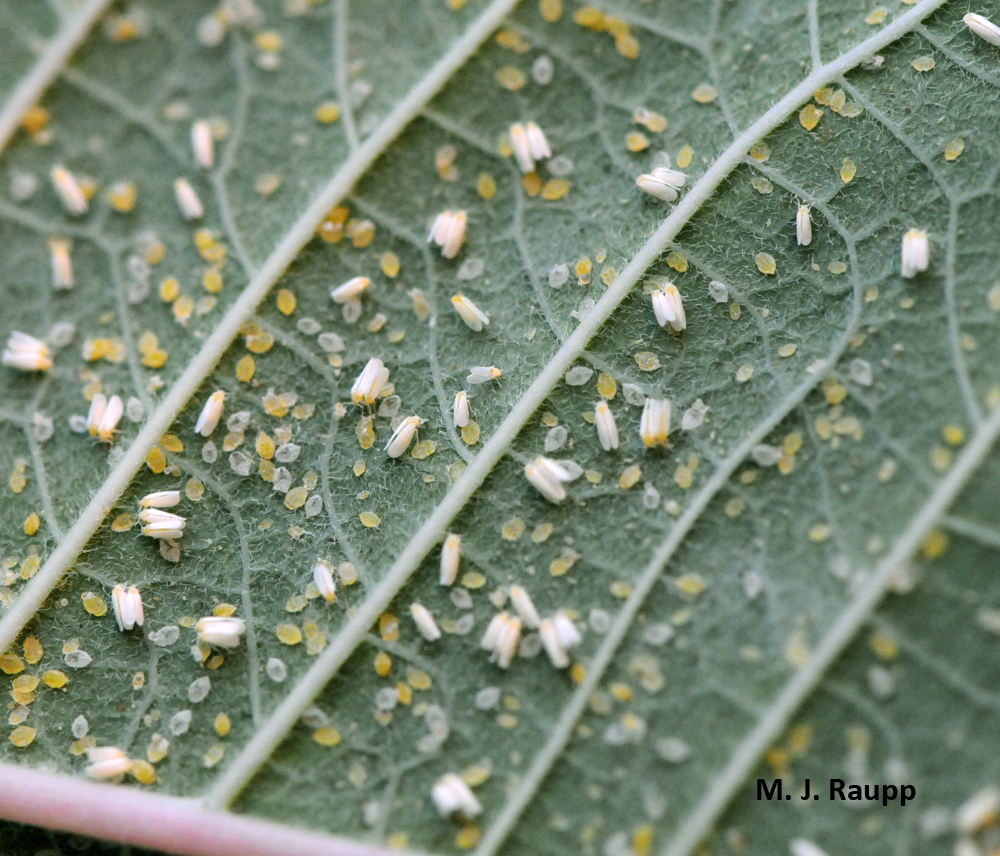Whiteflies in the Vegetable Garden
go.ncsu.edu/readext?472732
en Español / em Português
El inglés es el idioma de control de esta página. En la medida en que haya algún conflicto entre la traducción al inglés y la traducción, el inglés prevalece.
Al hacer clic en el enlace de traducción se activa un servicio de traducción gratuito para convertir la página al español. Al igual que con cualquier traducción por Internet, la conversión no es sensible al contexto y puede que no traduzca el texto en su significado original. NC State Extension no garantiza la exactitud del texto traducido. Por favor, tenga en cuenta que algunas aplicaciones y/o servicios pueden no funcionar como se espera cuando se traducen.
Português
Inglês é o idioma de controle desta página. Na medida que haja algum conflito entre o texto original em Inglês e a tradução, o Inglês prevalece.
Ao clicar no link de tradução, um serviço gratuito de tradução será ativado para converter a página para o Português. Como em qualquer tradução pela internet, a conversão não é sensivel ao contexto e pode não ocorrer a tradução para o significado orginal. O serviço de Extensão da Carolina do Norte (NC State Extension) não garante a exatidão do texto traduzido. Por favor, observe que algumas funções ou serviços podem não funcionar como esperado após a tradução.
English
English is the controlling language of this page. To the extent there is any conflict between the English text and the translation, English controls.
Clicking on the translation link activates a free translation service to convert the page to Spanish. As with any Internet translation, the conversion is not context-sensitive and may not translate the text to its original meaning. NC State Extension does not guarantee the accuracy of the translated text. Please note that some applications and/or services may not function as expected when translated.
Collapse ▲When summer days become humid and oppressive, you can be sure that whiteflies will be showing up soon. Whiteflies are small, white, winged insects that pierce the skin of the plant and suck the sap out. When the plant leaf is disturbed whiteflies will fly up in your face. Most folks who have gardened for a while are very familiar with the whitefly and know that they can quickly infest many garden crops.
One of the keys to controlling this pest is early detection and treatment. Check the undersides of leaves and look for small white insects. When you see them, don’t wait! Apply a chemical immediately. They are much easier to control before their numbers build up and they do build up quickly in hot and humid weather.
Sprays containing pyrethrin such as Bonide Tomato and Vegetable Concentrate should be applied thoroughly to the undersides of the leaves. This should be repeated every 7 days. An insecticidal soap will also offer some control. Insecticidal Soap is not a homemade product. It does have chemical ingredients and should not be confused with dish soap mixed with water and applied to plants. A common brand found in our area is Safer’s Insecticidal Soap. It is considered to be an organic product.
Good air movement is also a key to controlling whiteflies. Whiteflies also live in tall weeds so good weed management around the perimeter of the garden is important. Inspect your garden often and stay on top of problems. This is the best method for controlling whiteflies.





